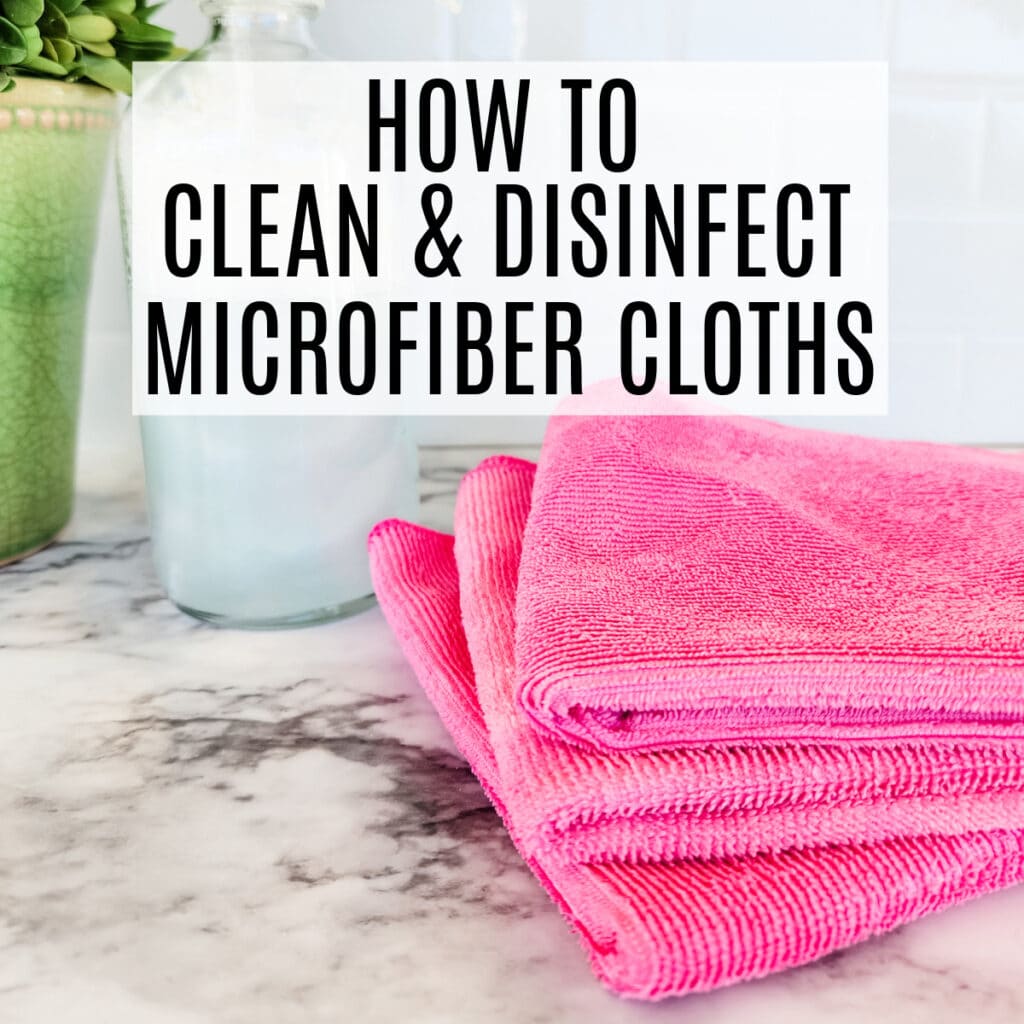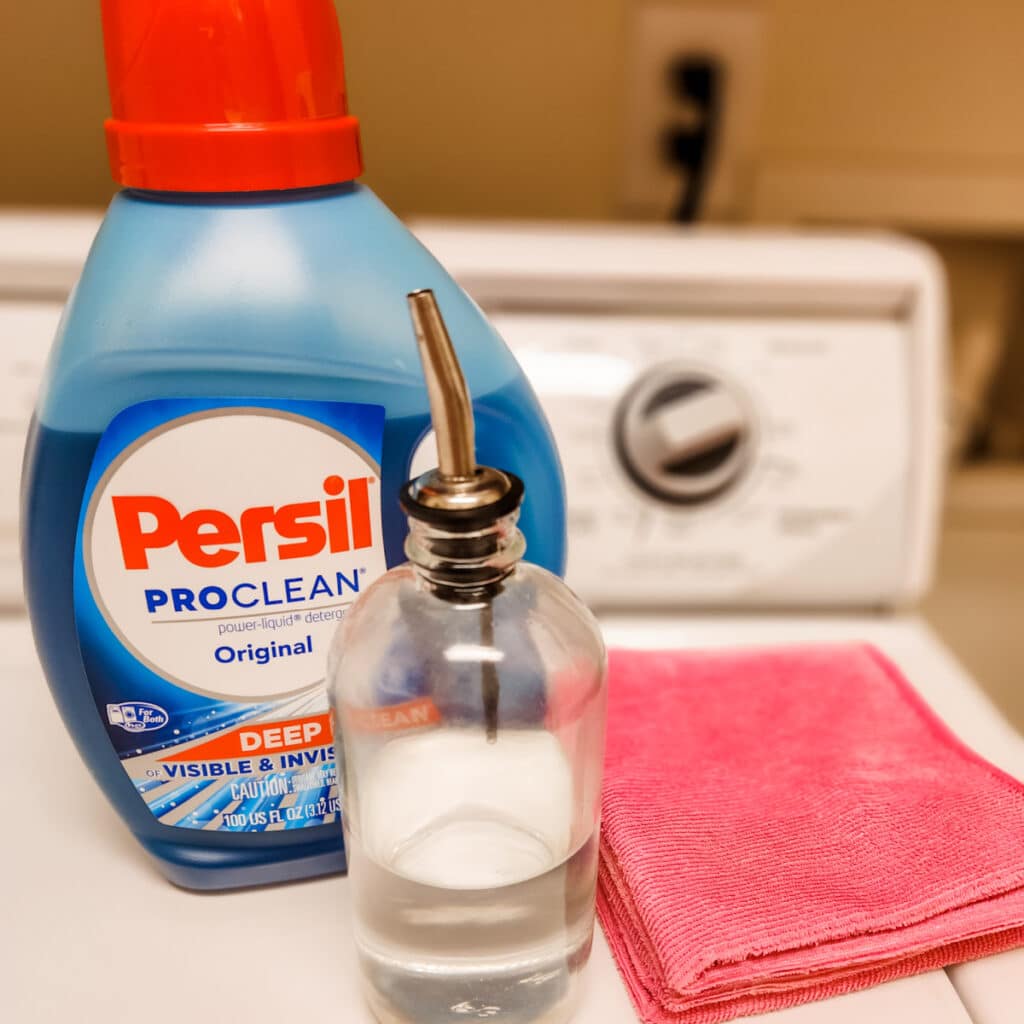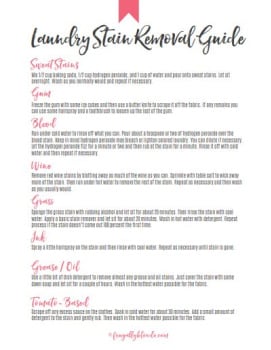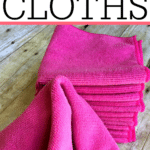Learn how to clean microfiber cleaning cloths in a few simple steps so they are good as new again and last forever!

Microfiber cloths are one my best cleaning tools and a must have around our house. I feel like they pick up more dirt and dust than using paper or cotton towels. Plus they don't leave the fuzzies around like cotton cloths do.
Over the years I have bought microfiber clothes that I use for cleaning the bathrooms, blinds, kitchen, dusting, and for dishes.
I ruined my first set of cleaning cloths because I didn't clean them right.
Since then, I have learned how to clean microfiber cloths so they last for years. I am amazed at how soft they are after hundreds of washes.
Why Are Microfiber Cloths So Great?
Superior Cleaning Power: The fibers of the cloth are very fine and synthetic, typically a blend of polyester and polyamide (nylon). These fibers are much smaller than a human hair, allowing them to pick up and trap dirt, excess dust, and other particles more effectively than traditional cloths made of cotton or other materials. The tiny synthetic fibers are also positively charged so they can easily pick up dust that is negatively charged.
Lint-Free and Non-Abrasive: Microfiber cloths are lint-free and non-abrasive, making them safe to use on delicate surfaces like glass, stainless steel, and electronics without scratching or leaving behind residue. These are great for everyday use.
Absorbency: The microfiber fabric has high absorbency due to the increased surface area of the tiny fibers. This makes them excellent for cleaning up spills and for drying surfaces effectively.
Reusable and Durable: These cloths are reusable and durable, lasting much longer than traditional cleaning cloths. They can withstand numerous washes without losing their effectiveness, which makes them more environmentally friendly and cost-effective in the long run.
Versatility: Microfiber cloths can be used for various cleaning tasks, from dusting and wiping surfaces to polishing and scrubbing. They are suitable for use in homes, offices, cars, and even in industries like healthcare and manufacturing.
Environmentally Friendly: Microfiber cloths are generally considered more environmentally friendly than disposable cleaning wipes or paper towels since those are one-time use.
If you don't already have microfiber cloths or want new ones I highly recommend these premium microfiber cloths. They are inexpensive and work great!
What You'll Need
- laundry detergent - without fabric softener added or bleach
- Vinegar - if desired. We recommend adding a little since it's a natural disinfectant. Don't miss these 26 genius vinegar hacks!

How Do You Clean Microfiber Cloths (the right way!)
Shake off any loose dust or debris from the cloths.
Fill your washing machine with hot or warm water. I prefer to use hot to make sure I kill off any germs.
Add a small amount of detergent to the machine. Toss in the soiled microfiber cloth.
Wash microfiber cloths on a gentle or delicate wash cycle.
For best results, use a medium or low heat dryer setting. You can also let them air dry on a flat surface.

Disinfecting Microfiber Towels
If you are using your microfiber cloths on things like the toilet or in the kitchen around raw meats you will want to disinfect them.
Add about 1/2 cup of vinegar to the load. Vinegar is great at killing off bacteria and germs.
Wash microfiber towels in hot water water on the delicate cycle.
Dry microfiber towels on a low heat setting or air dry.
Handwashing
Hand washing microfibers is real simple and great if you don't have enough for a full load.
Fill a sink with warm or cold water.
Shake out the excess dirt and dust from the cloths.
Add a little detergent and swish around. Submerge the cloths.
Allow them to soak for 15 minutes. Come back and agitate a little more.
Drain the sink and wring out the excess water. Rinse with cool water until it runs clean.
Wring the wet cloth again and let them dry.
*If you need to really disinfect, add a tablespoon of white vinegar to the water before starting.

Tired of laundry stains?
Get the free laundry stain removal printable!
Helpful Tips
- You want to make sure that you wash your microfiber cloths with only microfiber products. If you don't they will pick up little pieces of lint and not work as well.
- Avoid washing in harsh detergents.
- High heat can damage the fibers.
- Do not dry the cloths with dryer sheets or wool dryer balls.
- Clean the lint screen before drying so there is no transfer. Is your dryer slow to dry? Learn how to clean your dryer vent like a pro.
- Air drying is the best way to keep them in good condition, but remember to avoid direct sunlight. Because that can get too hot as well.
- Wash all microfiber cleaning products together and by themselves. This means you can toss in your dirty microfiber cloths with those nasty microfiber mop heads.
- Store microfiber cloths together and away from cotton. This ensures nothing is caught in the fibers and will keep them like new for years to come.
- It's a best practice to not cross contaminate your clothes. For example, we do not use the toilet cloths in the kitchen and vice versa.
- By using a medium or low heat setting you can really help your microfiber cloths last longer.
Why Can't You Wash Microfibers With Fabric Softener or Bleach?
There's a common misconception that you need fabric softener to keep these types of cloths soft, but that is not true. Fabric softeners will coat the small fibers and make the cleaning cloth completely useless, while bleach eats away the fibers.
How do you know when microfibers quit working?
Even with proper washing and drying, the cloths will eventually wear out. You will notice that it's not trapping dirt and dust like it was and you may actually start spreading dirt from the cloth to the next surface. At this point it's time to toss it and use another.
With the proper care, your microfibers will last a long time!



Leave a Reply